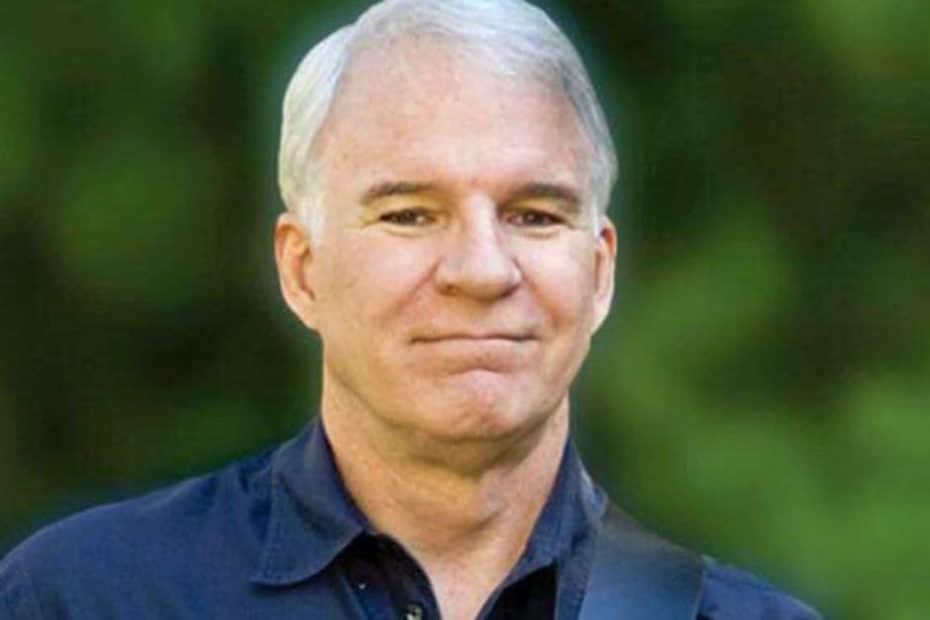Excerpt: From selling guidebooks to selling out shows, Steve Martin’s story will inspire patience, work ethic, and perseverance. Greatness doesn’t just happen.
The following is an excerpt from the book, Atomic Habits by James Clear. Emphasis added is my own. Enjoy!
Enter James Clear:
In 1955, Disneyland had just opened in Anaheim, California, when a ten-year-old boy walked in and asked for a job. Labor laws were loose back then and the boy managed to land a position selling guidebooks for $0.50 apiece.
Within a year, he had transitioned to Disney’s magic shop, where he learned tricks from older employees. He experimented with jokes and tried out simple routines on visitors. Soon he discovered that what he loved was not performing magic but performing in general. He set his sights on becoming a comedian.
Beginning in his teenage years, he started performing in little clubs around Los Angeles. The crowds were small and his act was short. He was rarely on stage for more than five minutes. Most of the people in the crowd were too busy drinking or talking with friends to pay attention. One night, he literally delivered his stand-up routine to an empty club.
It wasn’t glamorous work, but there was no doubt he was getting better. His first routines would only last one or two minutes. By high school, his material had expanded to include a five-minute act and, a few years later, a ten-minute show. At nineteen, he was performing weekly for twenty minutes at a time. He had to read three poems during the show just to make the routine long enough, but his skills continued to progress.
He spent another decade experimenting, adjusting, and practicing. He took a job as a television writer and, gradually, he was able to land his own appearances on talk shows. By the mind-1970s, he had worked his way into being a regular guest on The Tonight Show and Saturday Night Live.
Finally, after nearly fifteen years of work, the young man rose to fame. He toured sixty cities in sixty-three days. Then seventy-two cities in eighty days. Then eighty-five cities in ninety days. He had 18,695 people attend one show in Ohio. Another 45,000 tickets were sold for his three-day show in New York. He catapulted to the top of his genre and became one of the most successful comedians of his time.
His name is Steve Martin.
Martin’s story offers a fascinating perspective on what it takes to stick with habits for the long run. Comedy is not for the timid. It is hard to imagine a situation that would strike fear into the hearts of more people than performing along on stage and failing to get a single laugh. And yet Steve Martin faced this fear every week for eighteen years. In his words, “10 years spent learning, 4 years spent refining, and 4 years as a wild success.”
Martin’s comedy career is an excellent example of the Goldilocks Rule in practice, which stats that humans experience peak motivation when working on tasks that are right on the edge of their current abilities. Not too hard. Not too easy. Just right.
Each year, he expanded his comedy routine—but only by a minute or two. He was always adding new material, but he also kept a few jokes that were guaranteed to get laughs. There were just enough victories to keep him motivated and just enough mistakes to keep him working hard.
Stay just far enough outside of your comfort zone where you’re still motivated yet making some mistakes. Focus on how you can improve by 1% after each experience and keep moving forward towards your better version. Follow the Goldilocks Rule. Follow Steve Martin’s example. Good luck!
The above excerpt was found in James Clear’s book, Atomic Habits. If you enjoyed this excerpt, you can find more quotes, resources, and info on his book below:

Book Overview: No matter your goals, Atomic Habits offers a proven framework for improving–every day. James Clear, one of the world’s leading experts on habit formation, reveals practical strategies that will teach you exactly how to form good habits, break bad ones, and master the tiny behaviors that lead to remarkable results. If you’re having trouble changing your habits, the problem isn’t you. The problem is your system. Bad habits repeat themselves again and again not because you don’t want to change, but because you have the wrong system for change. You do not rise to the level of your goals. You fall to the level of your systems. Here, you’ll get a proven system that can take you to new heights.
Other Post(s) Inspired by this Book:
- 10 Sobering James Clear Quotes on Making Progress from Atomic Habits
- James Clear Quote on Happiness and How It’s About Absence Not Achievement (Beyond the Quote 94/365)
- James Clear Quote on The Importance Of Systems For Success (Beyond the Quote 8/365)
NEW In The Shop: Don’t Let The Tame Ones Tell You How To Live [Poster]
Why We ♥ It: Some of the best advice I (Matt here) ever got was: don’t take life advice from people who aren’t living a life you want to live and don’t take criticism from people you wouldn’t go to for advice. I created this poster to act as a reminder to listen more closely to our role models and less closely to our critics, trolls, and tamed-comfort-zone-hugger acquaintances. It’s also a perfect gift for the outdoor adventurer, travel enthusiast, or solo explorer (or soon to be). Available in print or digital download. 👇🏼
...Want to advertise your book, product, or service? Send inquiries to matt@movemequotes.com.

Written by Matt Hogan
Founder of MoveMe Quotes. On a mission to help busy people do inner work—for better mental health; for healing; for personal growth. Find me on Twitter / IG / Medium. I also share daily insights here. 🌱
It has taken me 1,000’s of hours to build this free library for you. If it has helped you, you can support my continued effort here. ☕️

